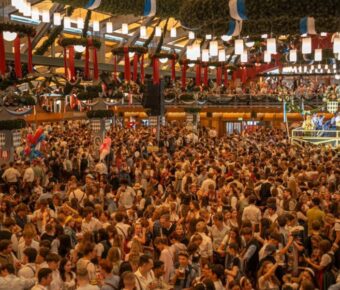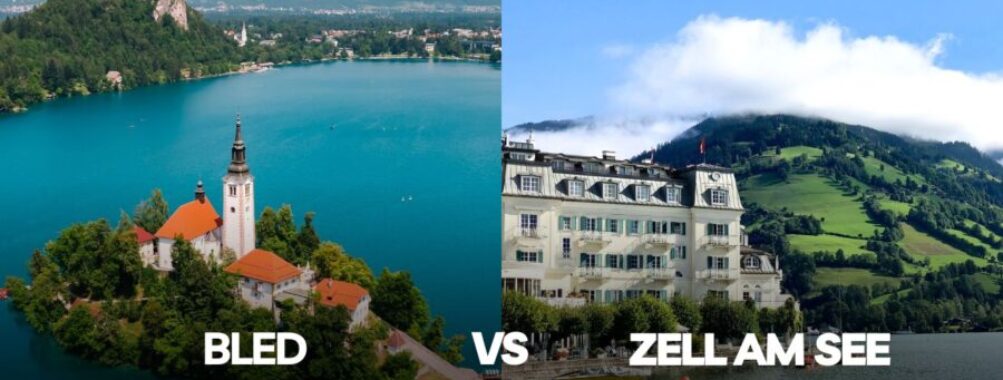
Bled vs Zell am See: 7 Key Differences Between These Stunning Alpine Lake Destinations
Lake Bled and Zell am See offer breathtaking mountain scenery and crystal-clear lakes in the stunning Alps. These alpine gems attract visitors seeking outdoor adventures and peaceful retreats alike. Bled in Slovenia charms with its fairytale island church and clifftop castle, while Zell am See in Austria impresses with its vibrant resort atmosphere and excellent winter sports facilities.
The journey between these two destinations takes about three hours by car, making them perfect companions on an alpine itinerary. Many travelers struggle to choose between them or wonder which towns to visit along the route. Both locations offer unique experiences despite their similarities. Bled tends to feel more intimate and romantic, while Zell am See offers more developed tourism infrastructure.
For families with young children, either destination works well, though Zell am See might offer more accommodation options during non-ski seasons. The surrounding areas provide plenty of opportunities for hiking, swimming, and cultural exploration, with charming villages and natural wonders dotting the landscape between these two alpine treasures.
Table of Contents
- Geographical Overview
- Location of Bled
- Location of Zell am See
- Natural Attractions
- The Beauty of Lake Bled
- The Charm of Zell am See-Kaprun
- Outdoor Activities
- Adventures in Bled
- Activities in Zell am See-Kaprun
- Cultural Experience
- Local Traditions in Bled
- Zell am See’s Cultural Identity
- Accommodations and Facilities
- Staying in Bled
- Lodging in Zell am See
- Transportation Guide
- Getting to Bled
- Traveling to Zell am See-Kaprun
- Seasonal Considerations
- Best Time to Visit Bled
- Ideal Seasons for Zell am See
- Travel Deals and Tips
- Culinary Delights
- Dining in Bled
- Gastronomy in Zell am See
- Family and Accessibility
- Family Fun in Bled
- Accessibility in Zell am See
- Frequently Asked Questions
- What unique attractions does Lake Bled offer compared to Zell am See?
- How does the après-ski experience differ between Zell am See and Bled?
- How do Bled and Zell am See compare in terms of family-friendly activities?
- What are the hidden gems to explore in Zell am See beyond the usual tourist spots?
- How do the culinary experiences in Bled contrast with those available in Zell am See?
- What historical landmarks can visitors enjoy in Bled that are distinct from Zell am See?
- Book Your Dream Experience
- More Travel Guides
Geographical Overview
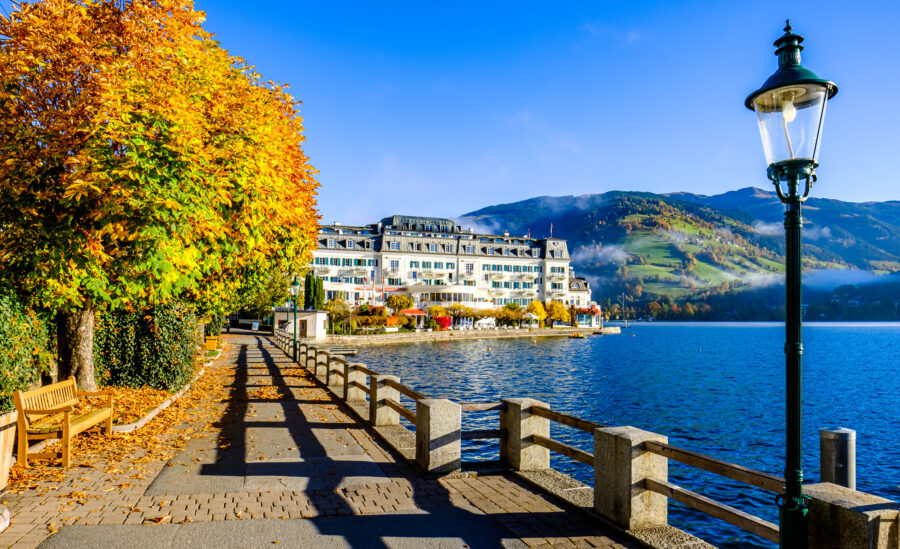
Bled and Zell am See sit in two different Alpine regions, each with unique charm and natural features. Both destinations offer stunning lakeside settings surrounded by mountains, but their specific geographical contexts create distinct travel experiences.
Location of Bled
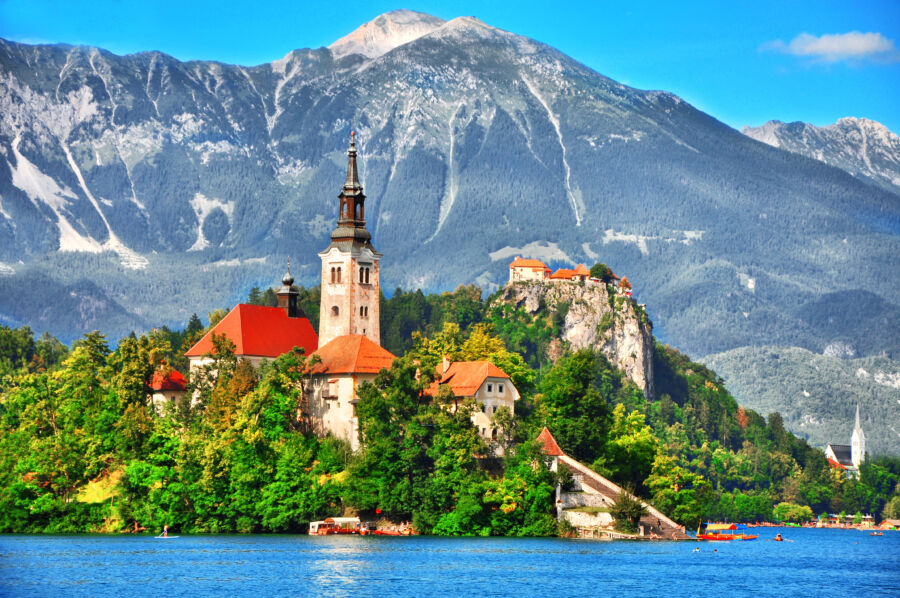
Lake Bled nestles in northwestern Slovenia, just south of the Austrian border. The lake sits about 475 meters above sea level in a picturesque valley surrounded by the Julian Alps. This glacial lake spans roughly 2 km by 1.4 km, making it compact enough to walk around in about 2 hours.
The iconic Bled Island sits in the middle of the lake, while the medieval Bled Castle perches dramatically on a cliff 130 meters above the shoreline. The town of Bled wraps around the eastern shore.
The Triglav National Park lies nearby, giving visitors easy access to Slovenia’s only national park. The Karavanke mountain range forms a natural border with Austria to the north.
Location of Zell am See
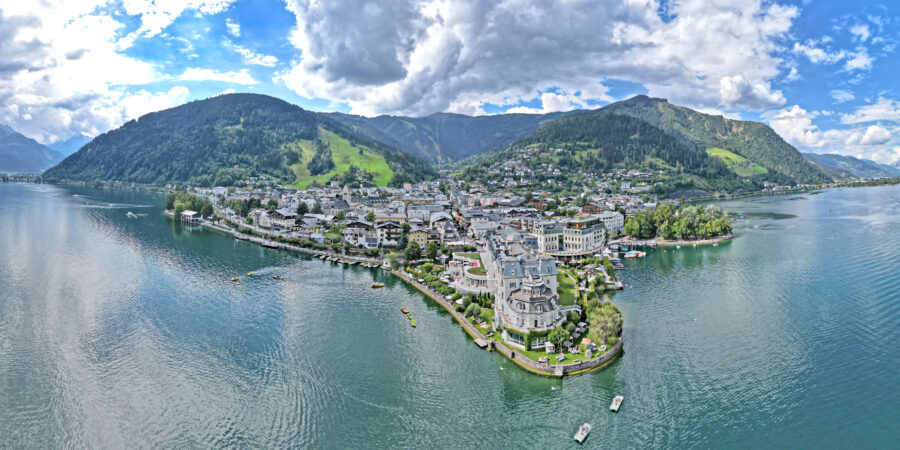
Zell am See is a stunning town in the Austrian state of Salzburg, about 80 km south of Salzburg city. The town sits on the western shore of Lake Zell (Zeller See), a crystal-clear alpine lake about 4 km long and 1.5 km wide.
The town is nestled at 750 meters elevation, surrounded by impressive mountains. The Schmittenhöhe (1,965 m) towers to the west, while the Kitzsteinhorn glacier (3,203 m) rises near neighboring Kaprun.
This location creates a rare “lake-mountain” combination in the Alps. The broader Zell am See-Kaprun region features varied terrain from lakeside flatlands to high alpine glaciers, all within a compact area that’s easy to navigate.
Natural Attractions
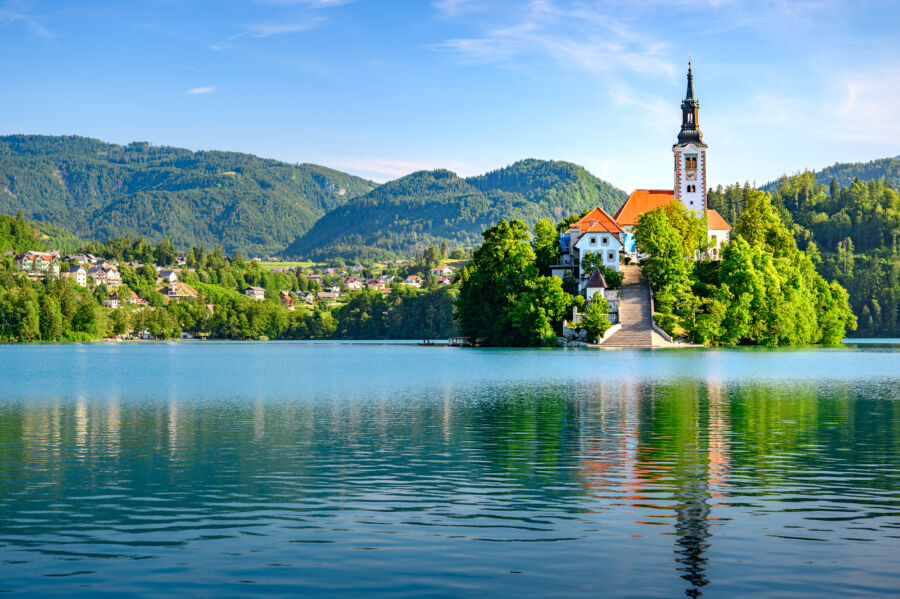
Both Bled and Zell am See offer stunning natural landscapes that take your breath away. Each destination features crystal-clear lakes surrounded by majestic mountains, creating picture-perfect scenery that draws visitors worldwide.
The Beauty of Lake Bled

Lake Bled is Slovenia’s crown jewel, a glacial lake with emerald-green waters that shine like a precious stone. The lake is relatively small (just 2 km long), which makes it perfect for walking the entire perimeter in about an hour.
In the middle sits the iconic Bled Island with its fairytale church. Visitors can reach the island via traditional wooden boats called “pletnas” by local oarsmen. The island’s 99 steps lead to the Church of the Assumption, where many couples ring the wishing bell for good luck.
The lake is framed by the Julian Alps, creating a dramatic backdrop that changes with the seasons. In summer, swimmers enjoy the surprisingly warm waters, while winter sometimes brings a magical frozen surface.
The Charm of Zell am See-Kaprun
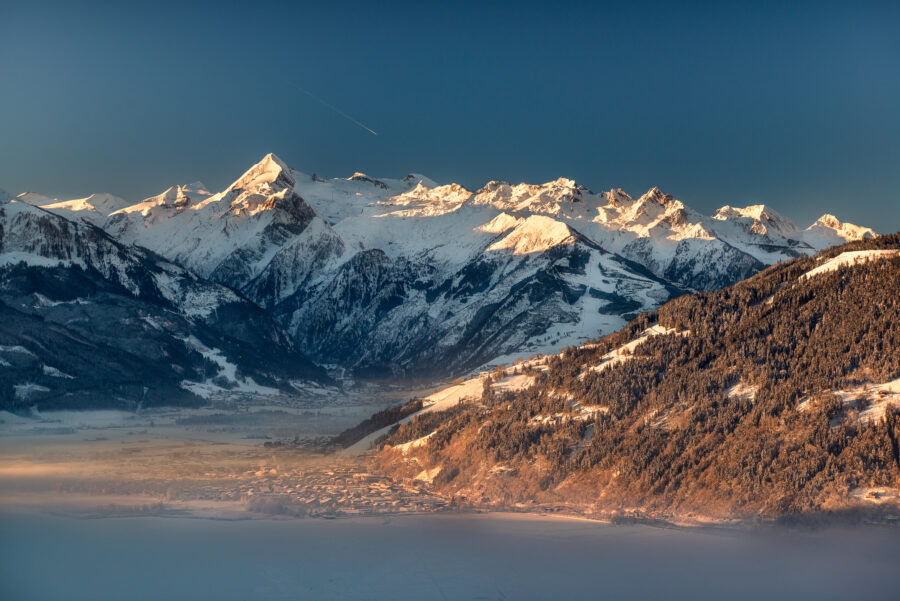
Zell am See centers around stunning Lake Zell, a crystal-clear alpine lake between mountains. The water is so clean you can drink it! The lake spans about 4 km, making it larger than Lake Bled.
The Zell am See-Kaprun region offers more diverse natural attractions beyond just the lake. The Kitzsteinhorn glacier (rising to 3,203 meters) provides year-round snow activities and breathtaking panoramic views from its observation deck.
Nearby, Kaprun features the High Mountain Reservoirs, which are impressive dams in the Alps. Visitors can take boat rides on Lake Zell during summer, where the turquoise waters reflect the surrounding peaks.
The region is known for its excellent hiking trails that wind through Alpine meadows filled with wildflowers in spring and summer. Many travelers recommend renting a boat to paddle along Lake Zell for an unforgettable experience.
Outdoor Activities
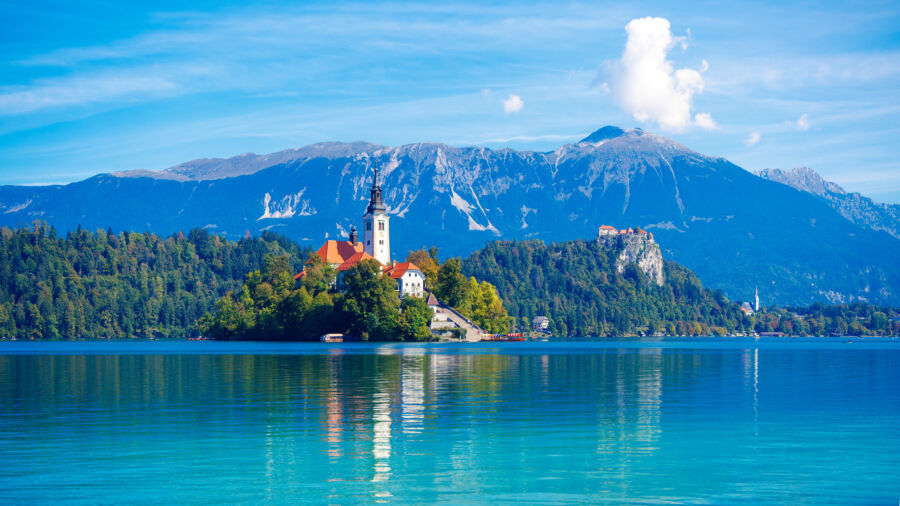
Bled and Zell am See offer incredible outdoor adventures with stunning alpine backdrops. Each destination provides unique ways to experience nature, whether you prefer water activities, mountain adventures, or seasonal sports.
Adventures in Bled
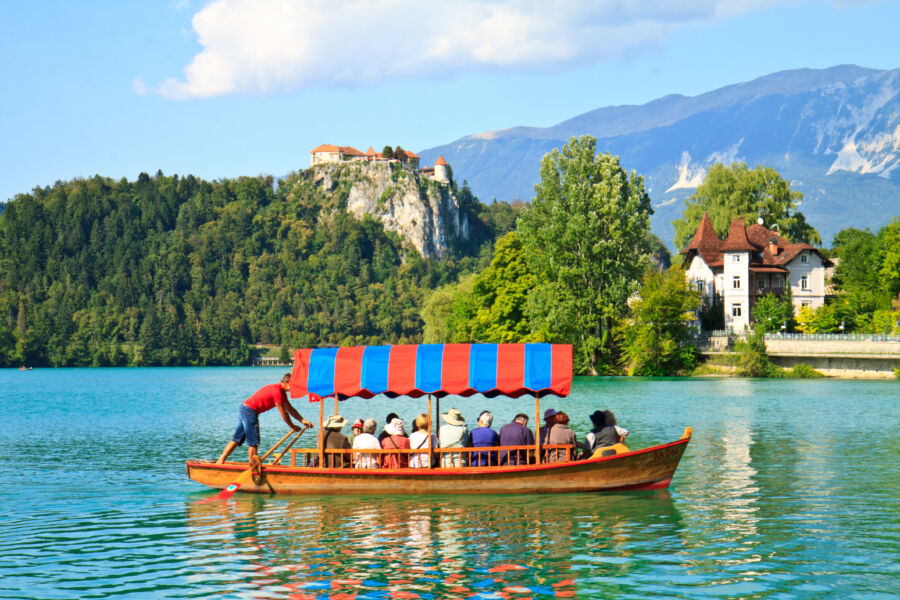
Lake Bled provides the perfect setting for water enthusiasts. Visitors can rent boats and paddle across the crystal-clear waters to reach the iconic island in the middle. This activity offers spectacular views of the surrounding Julian Alps and Bled Castle.
For adrenaline seekers, rafting down the Sava River offers thrilling rapids just a short distance from Bled. Ziplining over the river valley provides another heart-pounding adventure with amazing aerial views.
Hikers will find paradise in the nearby Bohinj Valley, with trails ranging from easy walks to challenging mountain routes. The Vintgar Gorge walk features wooden pathways alongside rushing turquoise waters.
Cycling enthusiasts can enjoy well-maintained paths around the lake or more challenging routes to nearby Kranjska Gora, a popular mountain resort town just 40 minutes away.
Activities in Zell am See-Kaprun
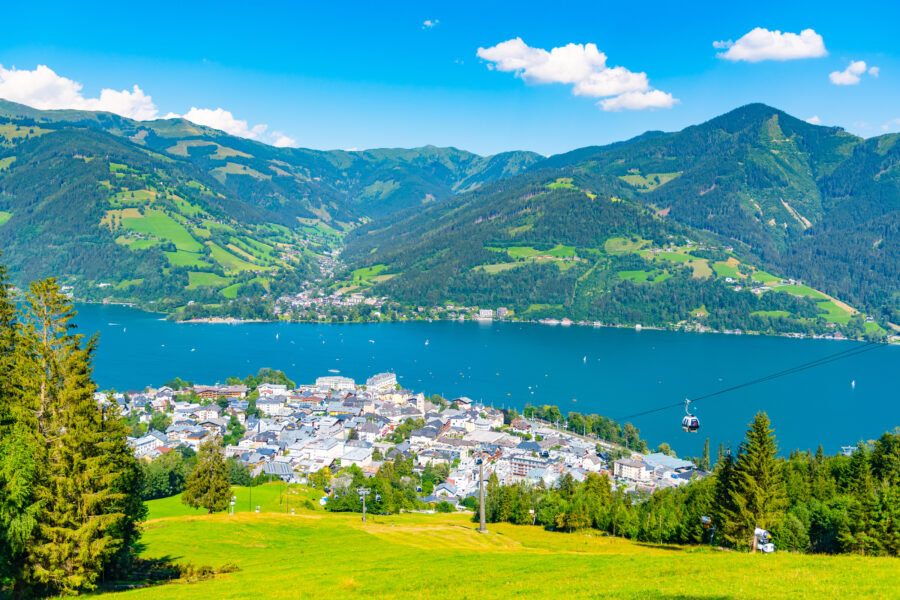
Zell am See centers around its stunning alpine lake, Lake Zell. Boat rentals allow visitors to paddle across its remarkably clear waters, surrounded by mountain panoramas. In the summer months, the lake beaches also offer swimming.
Winter transforms the region into a skiing paradise. The Schmittenhöhe mountain provides excellent slopes, while nearby Saalbach-Hinterglemm and Kitzbühel offer additional world-class skiing opportunities just a short drive away.
For unique experiences, consider booking a private tandem paragliding flight from Schmittenhöhe for breathtaking aerial views of the entire lake region.
Hiking trails crisscross the mountains with options for all ability levels. The Grossglockner High Alpine Road offers driving and cycling experiences with views of Austria’s highest peak.
Mountain biking trails range from family-friendly paths to challenging downhill routes, attracting European enthusiasts.
See Related: Bled vs Saalbach: Key Differences to Know Before Booking Your Alpine Getaway
Cultural Experience
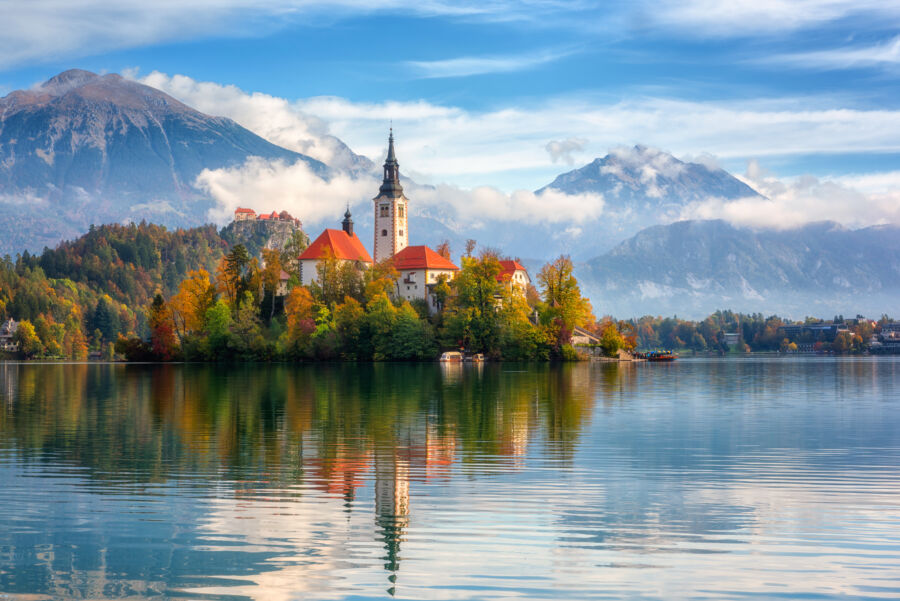
Bled and Zell am See offer rich cultural experiences beyond their stunning natural landscapes. These destinations preserve unique traditions while giving visitors a taste of authentic local life.
Local Traditions in Bled
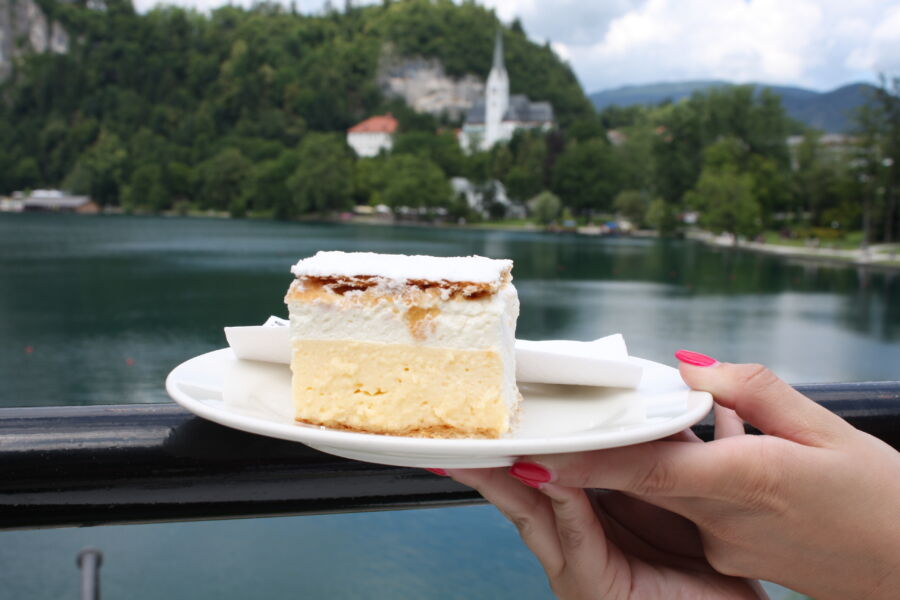
Bled’s cultural identity is deeply rooted in Slovenian traditions. The town is famous for its ” kremšnita ” cream cake – a must-try dessert with layers of custard and cream. You’ll often find locals enjoying this treat at lakeside cafés.
Traditional Pletna boats are iconic on Lake Bled. These wooden boats with colorful awnings are operated by “pletnarji” (oarsmen) whose profession has been passed down through generations. The boats take visitors to Bled Island using a rowing technique unique to this region.
Bled Castle hosts medieval events throughout the year, where visitors can experience historical reenactments and traditional crafts. The Castle Festival in July brings together local artisans, musicians, and food vendors.
Folk music plays an important role in Bled’s culture. You might hear accordion music or witness impromptu folk dancing performances in the town square during summer evenings.
Zell am See’s Cultural Identity

Zell am See embraces its Alpine heritage through various cultural expressions. The town celebrates several festivals tied to changing seasons, including the “Krampuslauf” in December—a fascinating Alpine tradition in which men dress as fearsome creatures and parade through town.
Traditional Alpine cuisine dominates local restaurants. Kaiserschmarrn (shredded pancake with fruit compote) and käsespätzle (cheese noodles) are dishes that reflect the hearty mountain lifestyle of the region.
Music is central to Zell am See’s identity. During the summer, the town hosts regular brass band concerts in the main square. These performances showcase traditional Austrian tunes that have been played for generations.
Local museums like the Vogtturm City Museum display artifacts revealing the town’s 700+ year history. Here you can learn about mining traditions and how tourism transformed this once-quiet farming community into an international destination.
Dirndls and lederhosen aren’t just for tourists – locals still wear traditional clothing for special occasions and festivals, keeping their Alpine heritage alive.
Accommodations and Facilities
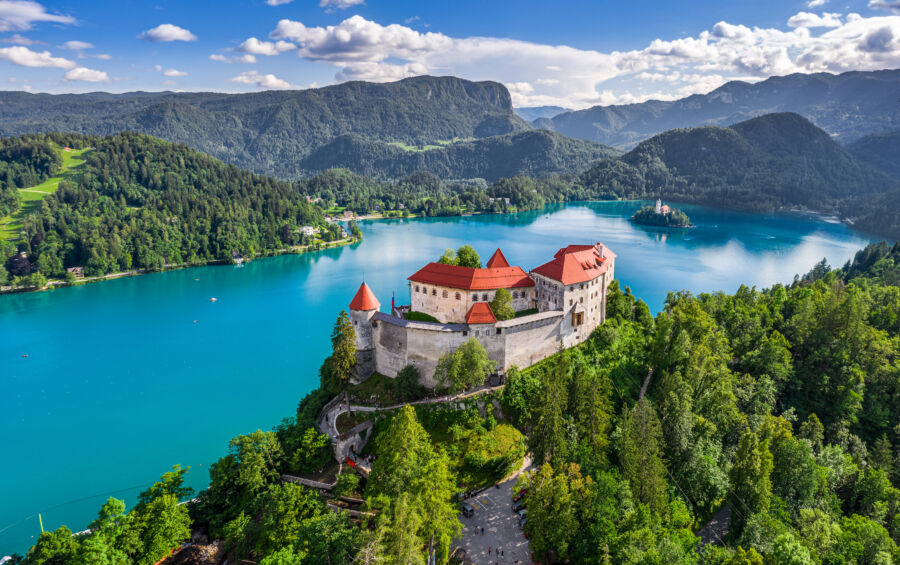
Bled and Zell am See offer various lodging options for different budgets and preferences. From luxury hotels with stunning views to cozy apartments for families, visitors have plenty of choices when planning their stay.
Staying in Bled
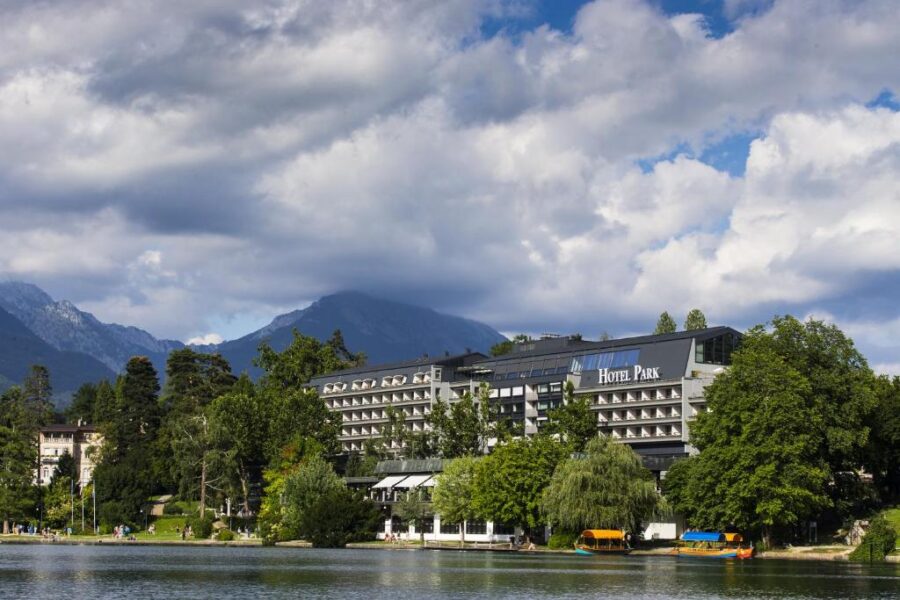
Bled’s accommodation scene blends charming local hospitality with modern amenities. The popular Hotel Park in Bled sits near the lakeshore, offering easy access to the main attractions. Many travelers appreciate its central location and reasonable rates.
For families or longer stays, apartments around Bled provide more space and kitchen facilities. The Hotel Bohinj ECO, though technically in nearby Bohinj, serves as another solid option for those wanting to explore the broader region.
Bled accommodations typically cost less than their Austrian counterparts. Visitors often mention the excellent value for money, with decent rooms at surprisingly affordable prices. Many places offer balconies with lake or mountain views.
Restaurant options abound near most lodgings, with prices that won’t break the bank. The town’s compact nature means most facilities are within walking distance from hotels.
Lodging in Zell am See
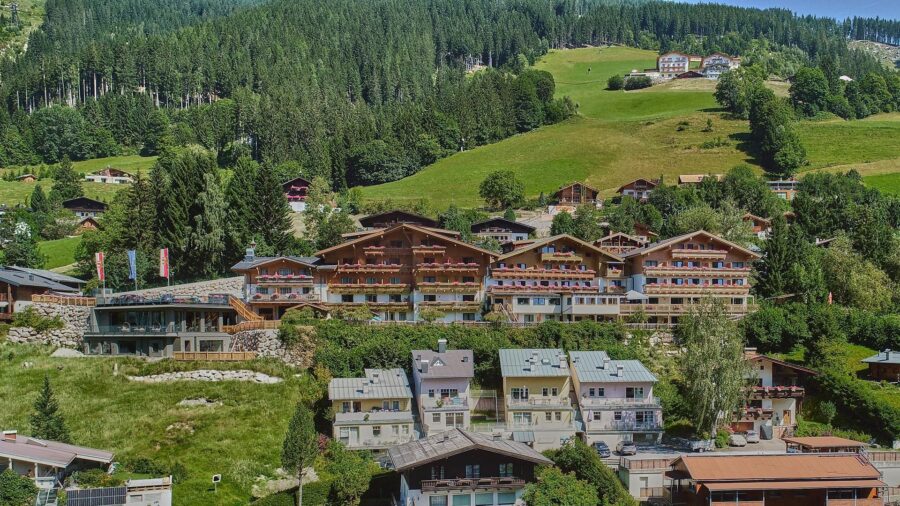
Zell am See features more upscale accommodation options overall. Hotel Daxer gets particularly strong reviews from travelers for its comfort and service quality. The town boasts several lakefront resorts with swimming access, spas, and on-site restaurants.
Prices run higher than in Bled, but many visitors feel the quality justifies the cost. Facilities typically include wellness centers, indoor pools, and upscale dining options. Family-friendly resorts offer dedicated kids’ activities and special meal options.
Alpbach and Oberau provide charming alternatives with traditional wooden architecture for those exploring other Austrian alpine towns. Though a bit further, Mayrhofen offers excellent accommodations for winter sports enthusiasts.
Many lodgings in Zell am See feature balconies overlooking the lake or the surrounding Alps. Apartment rentals have grown increasingly popular for those seeking more space or self-catering options.
Transportation Guide
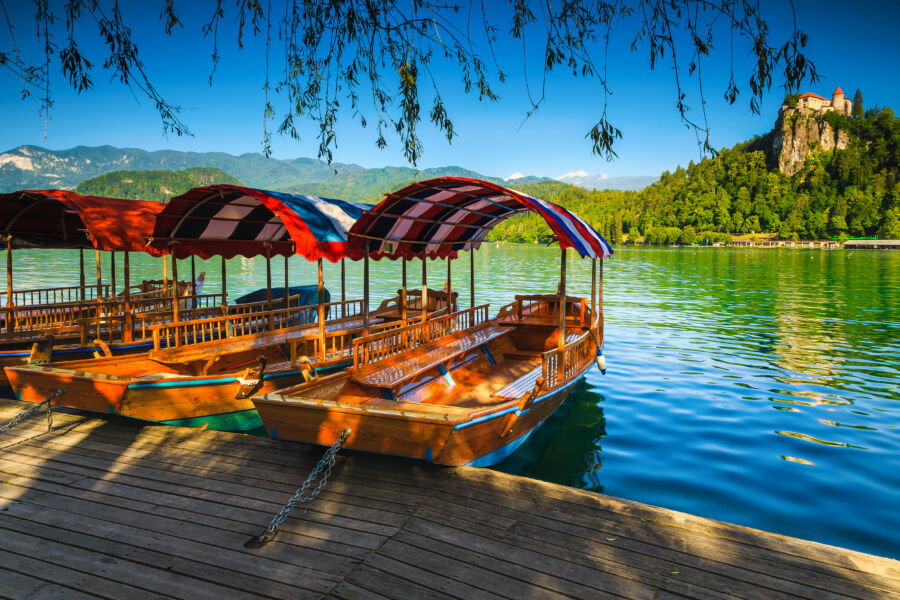
Navigating between Bled and Zell am See offers several options for travelers. Both destinations are well-connected, though journey times and costs vary depending on your preferred mode of transportation.
Getting to Bled
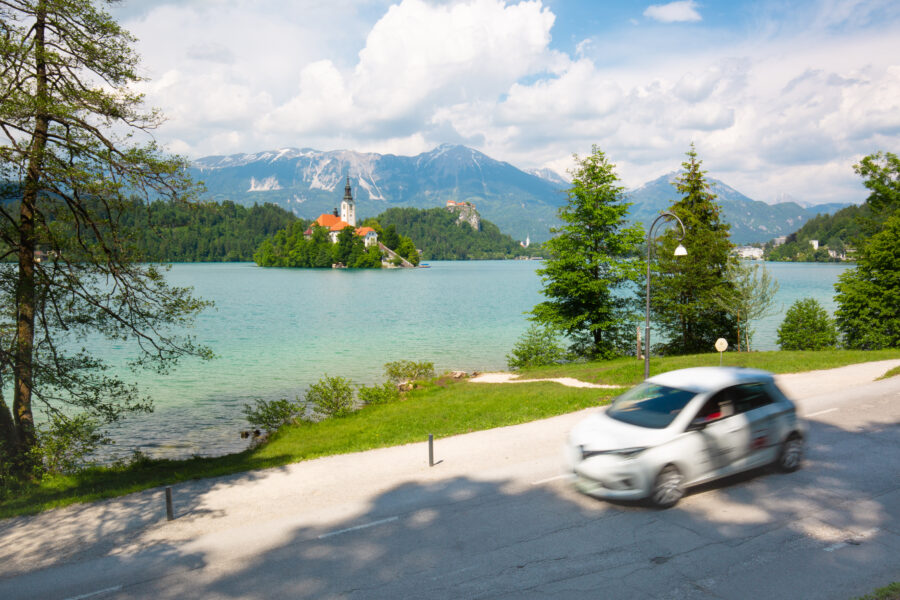
Reaching the picturesque Lake Bled in Slovenia requires some planning. Ljubljana Jože Pučnik Airport is the nearest major airport, about 36km away. From there, buses run regularly to Bled, typically taking 45 minutes.
For those traveling from neighboring countries, trains connect to Lesce-Bled station, about 4km from Lake Bled. A local bus or taxi can complete your journey to the lakeside.
Driving to Bled is straightforward, with well-maintained roads. Many visitors opt to Search Flights, Hotels, and Car Hire for the best vehicle rental rates.
Public transport within Bled is limited, but the town is compact enough to explore on foot. Horse-drawn carriages offer a charming way to tour the lake area in summer.
Traveling to Zell am See-Kaprun
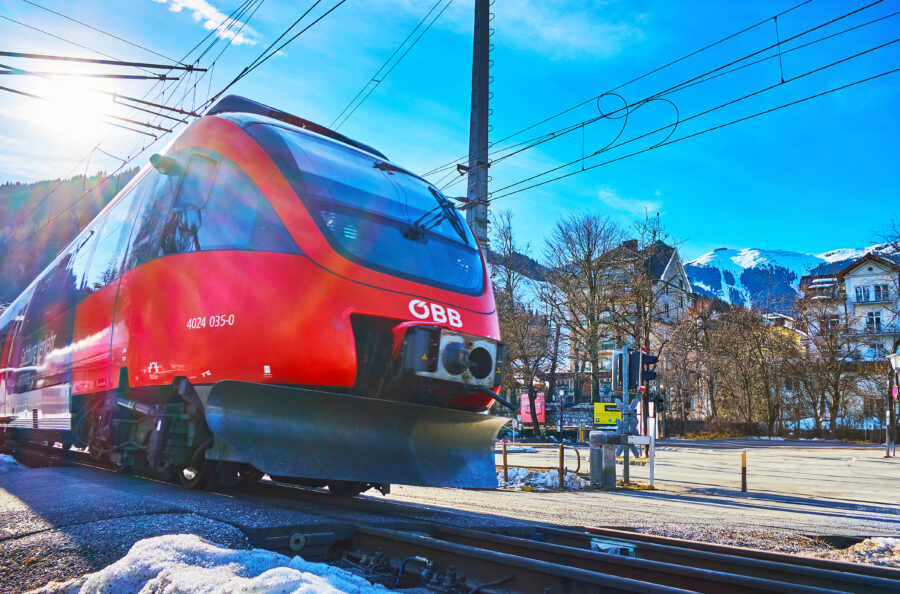
The Austrian resort of Zell am See-Kaprun is approximately 80km from Salzburg Airport. You can reach it by taking regular trains from Salzburg to Zell am See. The journey lasts about 1.5-2 hours.
Direct trains also run from major cities like Vienna and Innsbruck. The Zell am See train station is conveniently located near the town center, making it an efficient option for travelers.
If you’re driving between Bled and Zell am See, expect a journey of about 2.5 hours. The route covers roughly 138 miles (222km) and offers stunning alpine scenery along well-maintained highways.
Public transport within Zell am See is excellent. The town offers free buses for visitors with a valid guest card. In winter, special ski buses connect accommodation areas with the slopes.
Private transfers between Bled and Zell am See start at €102. They provide a comfortable door-to-door service without the hassle of connections.
Seasonal Considerations
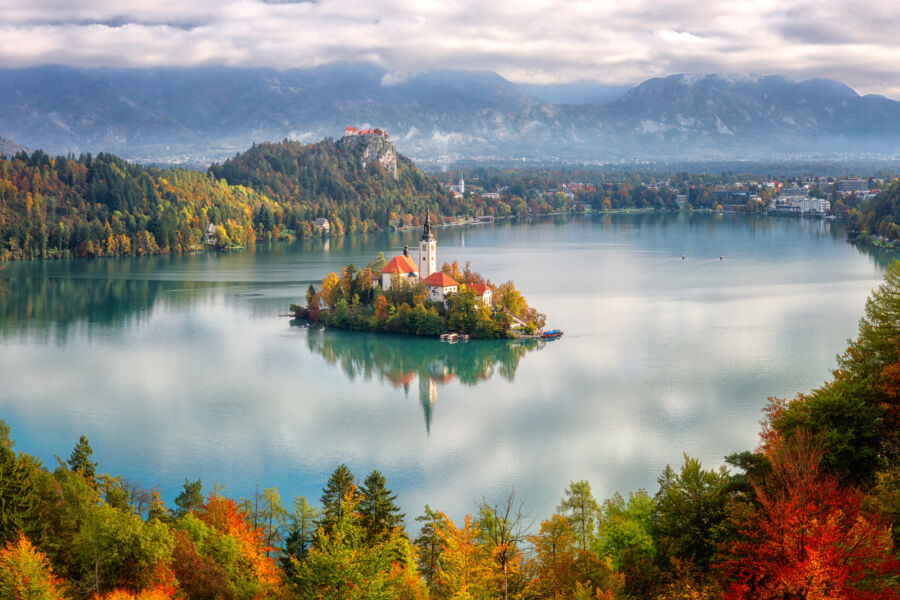
Knowing when to visit can significantly impact your experience at either destination. Bled and Zell am See have distinct seasonal patterns affecting crowds, activities, and enjoyment.
Best Time to Visit Bled
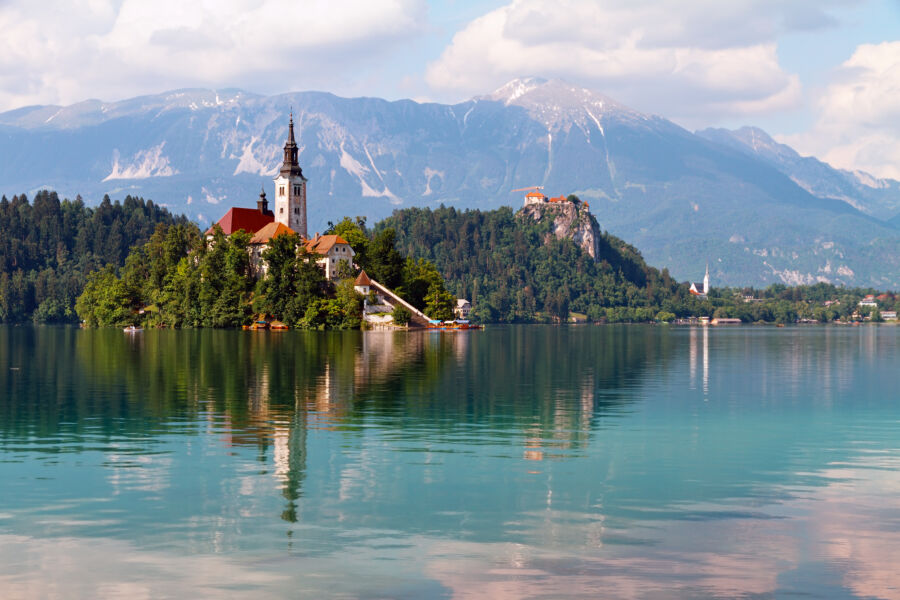
Bled shines brightest during late spring through early fall. May to September offers warm temperatures, perfect for swimming in the lake and hiking the surrounding trails. The water temperature becomes inviting around June, making it ideal for water sports.
Summer (July-August) brings the most tourists and higher prices, but the weather is reliably pleasant. If you want to avoid crowds but enjoy good weather, aim for May, June, or September when the attractions remain open but with fewer people.
Winter in Bled has charm with occasional snow covering the castle and lake, creating postcard-perfect scenes. December features charming Christmas markets, while January and February offer quieter experiences with fewer tourists.
Ideal Seasons for Zell am See
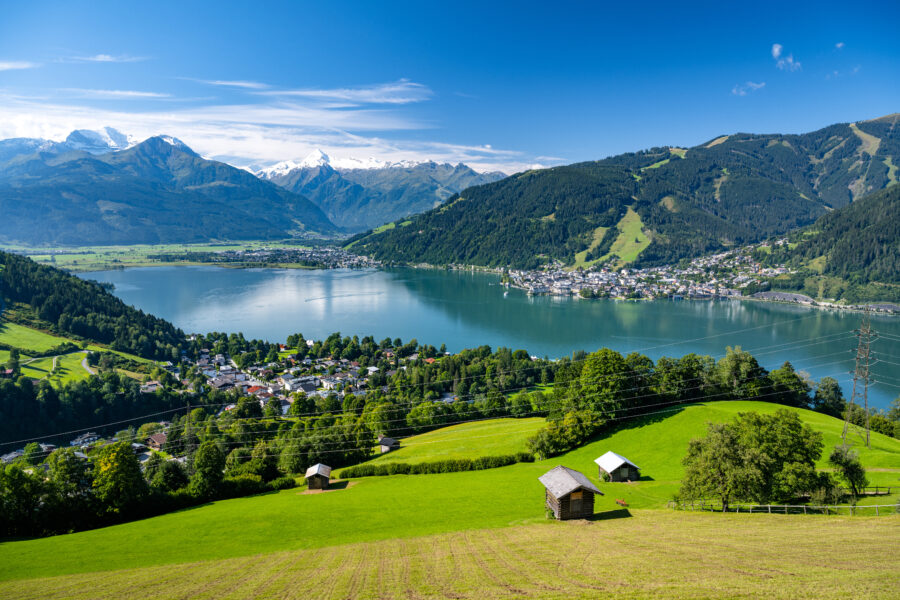
Zell am See operates as a year-round destination with two distinct peak seasons. Winter (December to March) transforms the area into a snow sports paradise, with reliable snow coverage, especially compared to some neighboring areas.
Mid- to late March gets busy but isn’t overcrowded in the ski resorts. February is the peak winter season, but it is still manageable. Depending on the year, early April can offer excellent skiing conditions.
Summer (June to September) opens the crystal-clear lake for swimming, boating, and water sports. The hiking trails become accessible and offer stunning Alpine views. Consider visiting in May or late September for fewer crowds but pleasant weather.
Off-season periods (April-May and October-November) bring lower prices and fewer tourists, but some attractions may have limited hours or be closed entirely.
See Related: Bled vs Lech: Key Differences Between These Stunning Alpine Destinations
Travel Deals and Tips
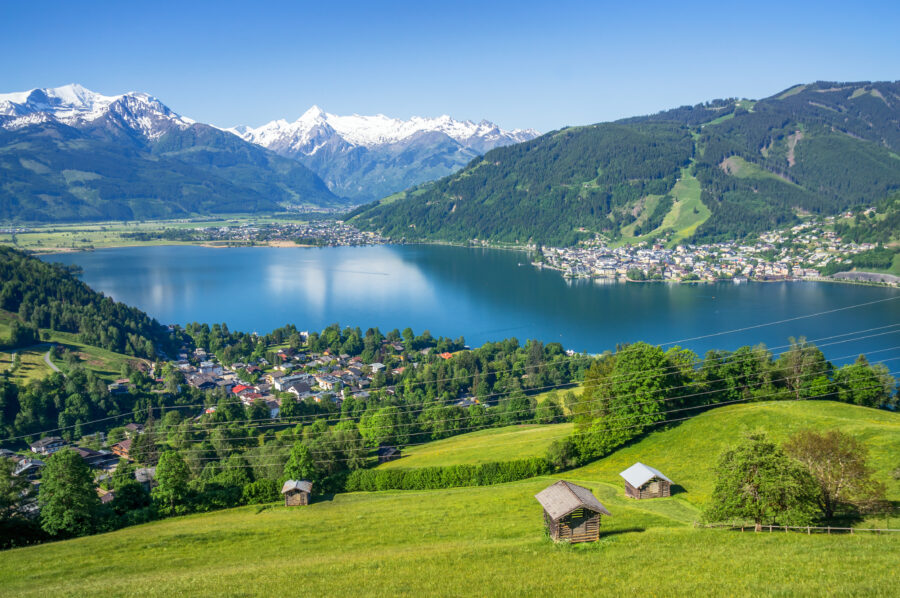
When planning a Bled or Zell am See, timing your visit can save you serious cash. Both destinations offer cheaper rates during shoulder seasons (April-May and September-October).
For Bled, look into the Bled Card, which includes discounts on attractions and sometimes free public transport. The Julian Alps Card is another money-saver if you’re exploring beyond just the lake.
Zell am See offers the Zell am See-Kaprun Summer Card, often free with accommodation stays of 1+ nights. This card covers cable cars, beach access, and public transport – a huge value!
Major European tour operators offer package holidays to both destinations. TUI and Jet2Holidays frequently offer deals to Zell am See, while Bled is often featured in Slovenia multi-center packages.
Consider these money-saving tips:
- Book accommodations directly with smaller, family-run hotels
- Eat lunch at restaurants instead of dinner (same food, lower prices)
- Use public transport instead of taxis
- Bring a reusable water bottle (tap water is excellent in both places)
Zell am See tends to have more family-specific package deals for families traveling with kids, especially during school holidays. Many include ski passes in winter or activity passes in summer.
Booking 6-8 months in advance typically secures the best rates for both destinations, though last-minute deals can sometimes be found for Bled during quieter periods.
Culinary Delights

Both destinations offer mouthwatering local cuisine that reflects their unique cultural heritage and alpine surroundings. Food lovers will find plenty to enjoy, whether dining lakeside in Bled or on the mountain slopes in Zell am See.
Dining in Bled
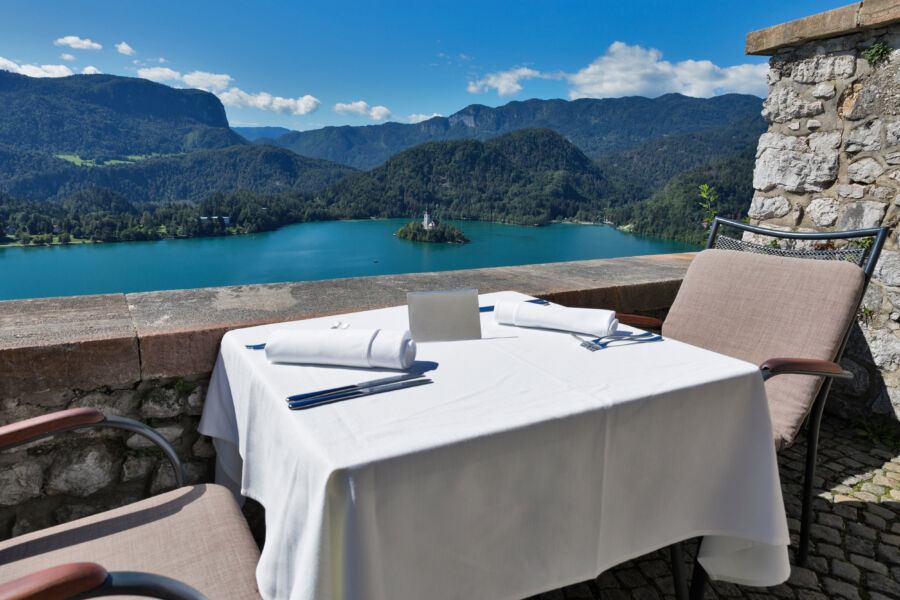
Bled’s culinary scene combines Slovenian traditions with Alpine influences. The star attraction is kremšnita (Bled cream cake) – a heavenly dessert with layers of crispy pastry and vanilla custard made the same way since 1953. You’ll find it at most cafés, but Park Hotel‘s version is considered the original.
For heartier fare, try locally caught Sava River trout served with buckwheat and potatoes. Castle Restaurant offers stunning lake views alongside traditional dishes like žganci (buckwheat spoonbread) and štruklji (rolled dumplings).
Wine enthusiasts should sample Slovenia’s excellent but lesser-known varieties. Many restaurants feature local Rebula and Teran wines, which pair perfectly with regional cuisine.
Street food fans shouldn’t miss burek (flaky pastry with meat or cheese) from small bakeries in town. It’s perfect for a quick, budget-friendly meal between sightseeing adventures.
Gastronomy in Zell am See

Zell am See elevates mountain dining with its mix of traditional Austrian fare and gourmet options. The Schmittenhöhe mountain hosts numerous restaurants and alpine huts where you can enjoy hearty dishes with panoramic views.
Must-try specialties include Kaiserschmarrn (shredded pancake with fruit compote) and Käsespätzle (cheesy egg noodles). Tafelspitz (boiled beef) and Wiener Schnitzel are Austrian classics done exceptionally well by meat lovers.
The Culinary Ski Days event, held over three weekends, offers a special treat. Visitors can take breaks from the slopes by participating in wine tastings and enjoying live cooking demonstrations.
Don’t miss the cozy mountain huts like Sonnalm, where you can warm up with jagertee (hot spiced tea with rum) and freshly baked apple strudel after a day of outdoor activities.
For fine dining, lakeside restaurants in Zell am See offer fresh local fish and seasonal ingredients with lovely water views.
Family and Accessibility
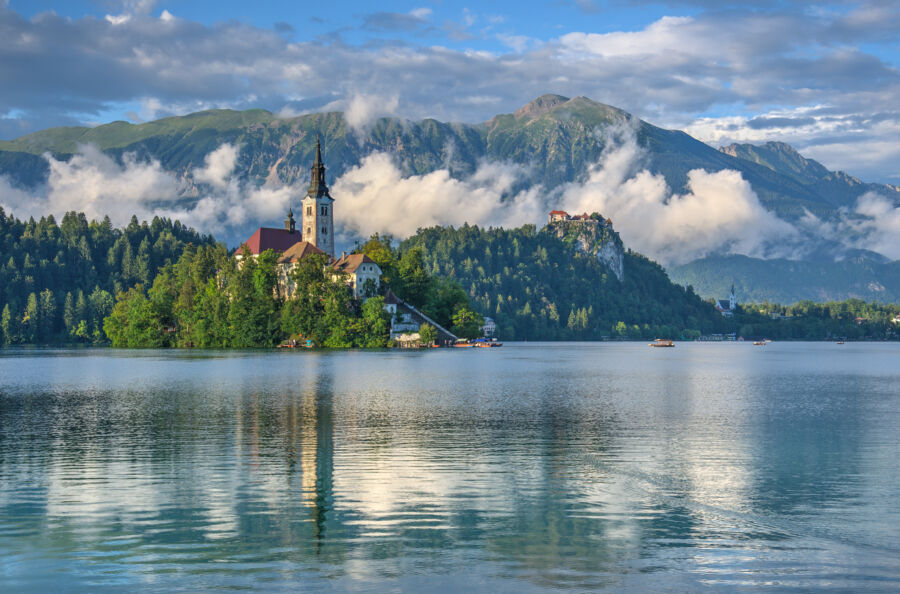
Both Bled and Zell am See offer fantastic options for families looking for a memorable vacation. These destinations provide different approaches to family fun, with varying amenities and accessibility options that cater to diverse needs.
Family Fun in Bled
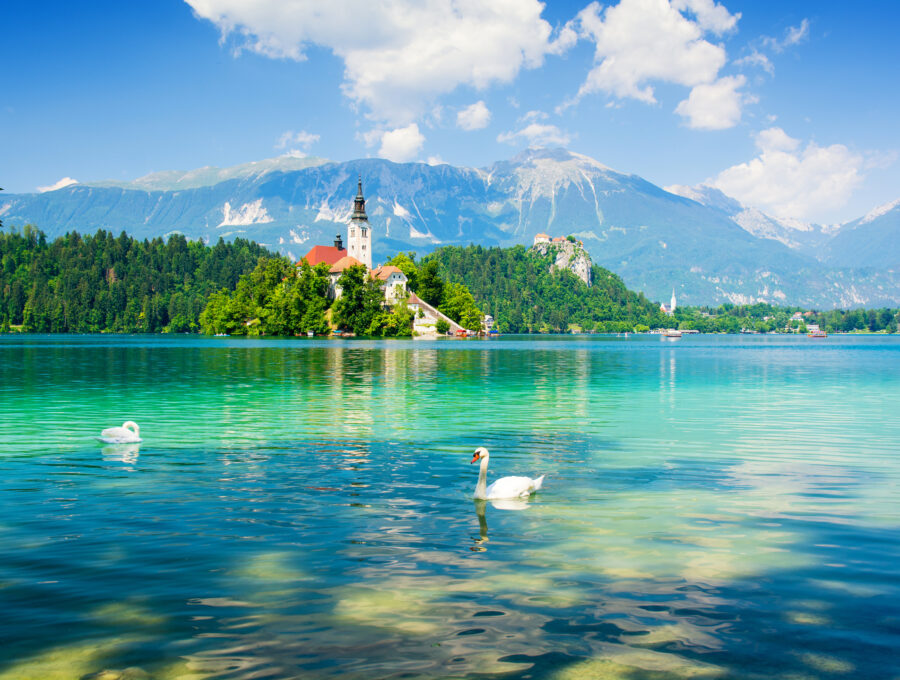
Bled is a magical place for kids and parents alike. The fairytale-like castle perched on a cliff overlooking the lake creates a sense of wonder for little ones. The calm waters of Lake Bled are perfect for families, allowing for safe swimming in the summer months.
Kids particularly love the traditional pletna boats that take visitors to Bled Island. These wooden boats, rowed by local oarsmen, add a touch of adventure without any safety concerns. Once on the island, children enjoy ringing the wishing bell in the church.
For active families, gentle hiking paths circle the lake, taking about 1-2 hours to complete at a leisurely pace. These paths are stroller-friendly and offer plenty of spots to stop for ice cream or rest breaks.
Accessibility in Zell am See
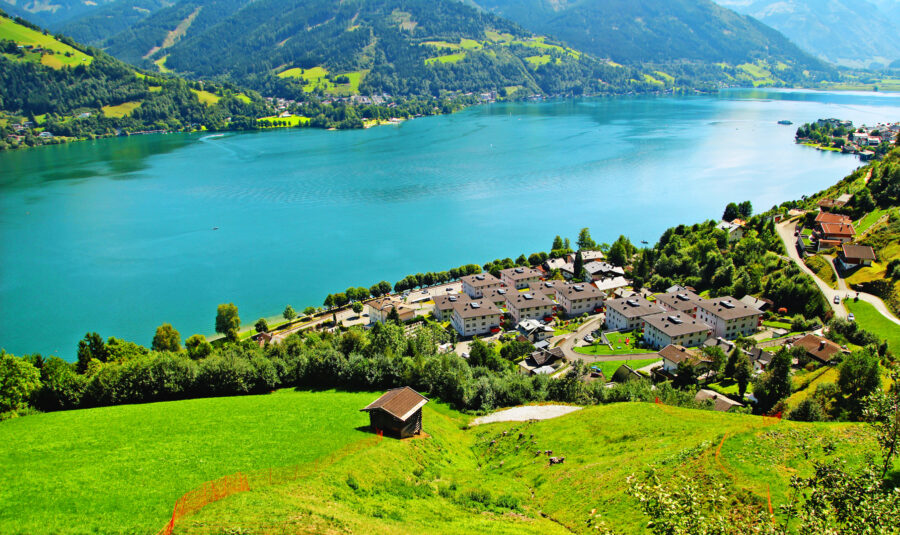
Zell am See excels at accessibility and family-friendly infrastructure. The resort has earned a reputation as one of Austria’s best destinations for family ski holidays, with excellent ski schools specifically designed for children of all abilities.
The area features well-groomed, gentle slopes perfect for beginners and intermediates. Most accommodations allow families to access the lifts directly from the two villages, eliminating the need for bus or taxi rides with tired children and heavy equipment.
Beyond skiing, Zell am See offers plenty of alternative activities. Families can enjoy:
- Sledging down designated trails
- Ice skating on the frozen lake (weather permitting)
- Peaceful winter hiking paths suitable for older children
- Indoor swimming facilities for rainy days
The town center is compact and mostly pedestrianized, making it safe for families with young children to explore together.
See Related: Bled vs Kaprun: Which Alpine Paradise Offers the Ultimate Year-Round Adventure?
Frequently Asked Questions
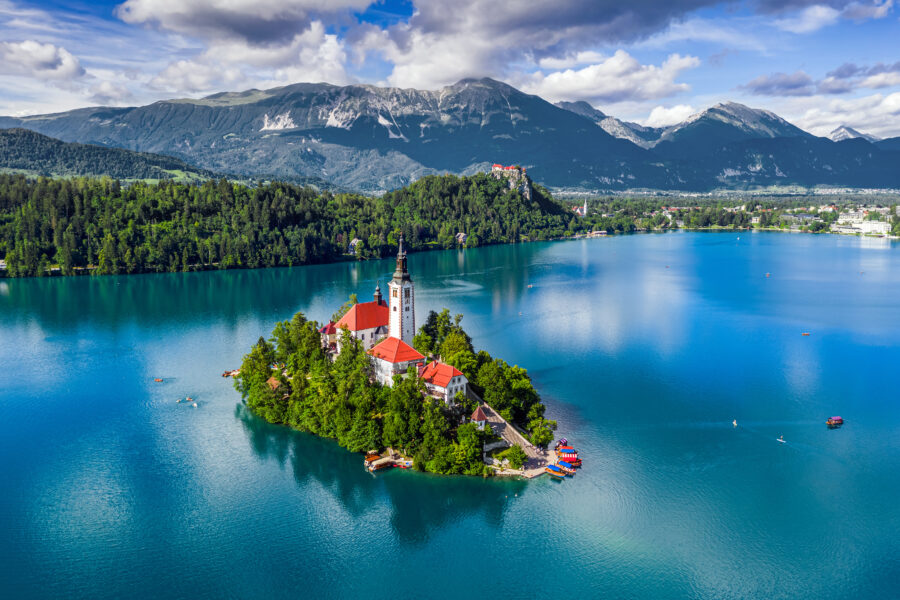
Bled and Zell am See offer unique experiences catering to different traveler preferences. These destinations have distinct attractions, activities, and cultural experiences that set them apart.
What unique attractions does Lake Bled offer compared to Zell am See?
Lake Bled boasts the iconic Bled Island with its picturesque Church of the Assumption, which visitors can reach via traditional wooden boats called “pletnas.” This makes for a distinctly Slovenian experience you won’t find in Austria.
Bled Castle, perched on a cliff 130 meters above the lake, offers stunning panoramic views that differ from the mountain perspectives in Zell am See. The medieval architecture and the museum inside provide insights into regional history.
The Vintgar Gorge near Bled features wooden walkways along turquoise waters, creating a magical hiking experience through limestone canyons. This natural wonder offers a different kind of beauty than the Alpine landscapes of Zell am See.
How does the après-ski experience differ between Zell am See and Bled?
Zell am See offers a traditional Alpine après-ski scene with numerous mountain bars and restaurants on the slopes. The Austrian tradition of “hüttengaudi” (mountain hut parties) creates a lively atmosphere with music and dancing.
Bled’s winter social scene tends to be more subdued and intimate, with fewer dedicated après-ski venues. The focus here is more on relaxation at thermal spas and lakeside dining rather than partying.
Zell am See features more nightlife options, with dedicated clubs and bars open late into the night. Bled, by comparison, offers quieter evening entertainment centered around hotel bars and restaurants.
How do Bled and Zell am See compare in terms of family-friendly activities?
Both destinations excel at catering to families, but in different ways. Zell am See offers more comprehensive winter sports programs for children, with dedicated ski schools and kid-friendly slopes.
Bled shines in summer with gentle swimming areas, boat rides, and easy hiking trails suitable for young children. The fairytale-like castle and island particularly capture children’s imaginations.
Zell am See provides all-weather activities, such as the indoor swimming complex and various family-oriented festivals throughout the year, making it slightly more versatile for families during unpredictable weather.
The Schmittenhöhe sunrise hikes offer magical views away from daytime crowds. Early risers can witness the alpenglow illuminate surrounding peaks in solitude before the ski lifts start running.
Locals recommend exploring the lesser-known Thumersbach side of the lake, which has charming cafes and swimming spots with fewer tourists. The walking path here provides peaceful lake views without the crowds.
The nearby town of Kaprun hides historical treasures, such as the old town center and traditional Alpine farmhouses. However, these authentic Austrian experiences are often overlooked in favor of skiing and lake activities.
How do the culinary experiences in Bled contrast with those available in Zell am See?
Bled is famous for its cream cake (“kremšnita”), a local delicacy you won’t find in Austria. Slovenian cuisine in Bled blends Balkan, Mediterranean, and Alpine influences.
Zell am See showcases traditional Austrian fare like käsespätzle (cheese noodles), wiener schnitzel, and various strudels. The Austrian wine culture is also more prominent here than in Bled.
Lakeside dining options differ significantly, with Bled offering more intimate restaurants with romantic views of the island. Zell am See features larger establishments with broader menus catering to international tourists.
What historical landmarks can visitors enjoy in Bled that are distinct from Zell am See?
Bled’s 11th-century castle is significantly older than any structure in Zell am See. It offers visitors a glimpse into medieval Slovenia, and its museum contains artifacts dating back to the first settlements in the area.
The Church of the Assumption on Bled Island features the famous “wishing bell,” which visitors ring for good luck. This centuries-old tradition represents a unique cultural experience.
Once a summer residence of former Yugoslav President Tito, Villa Bled provides insight into the region’s 20th-century political history. This historical dimension offers context absent in the more tourism-focused Zell am See.
